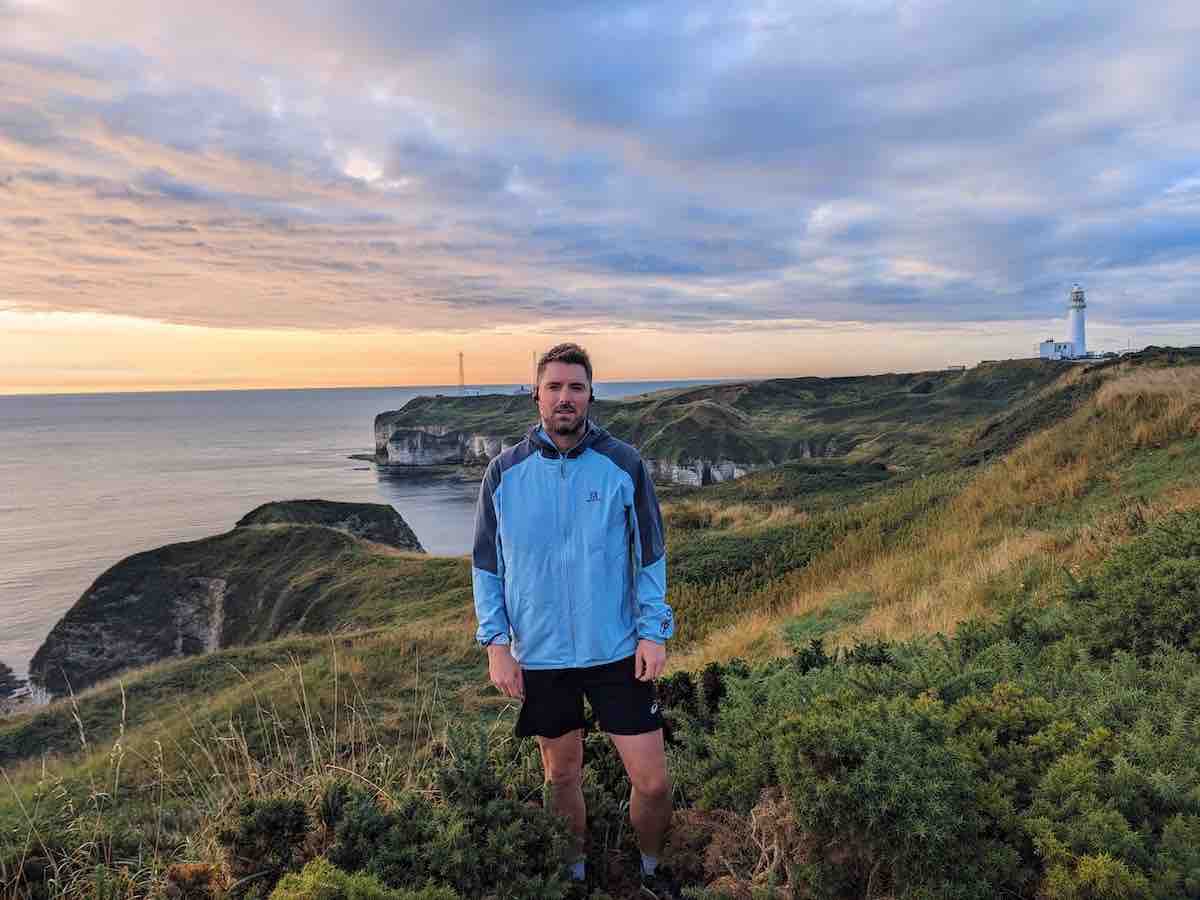No stranger to photos of Flamborough Head, I’d long lusted after its great walls of wave-battled chalk. The only chalk sea cliffs in the north of England.
However, one thing social media doesn’t quite capture is its walking or running potential.
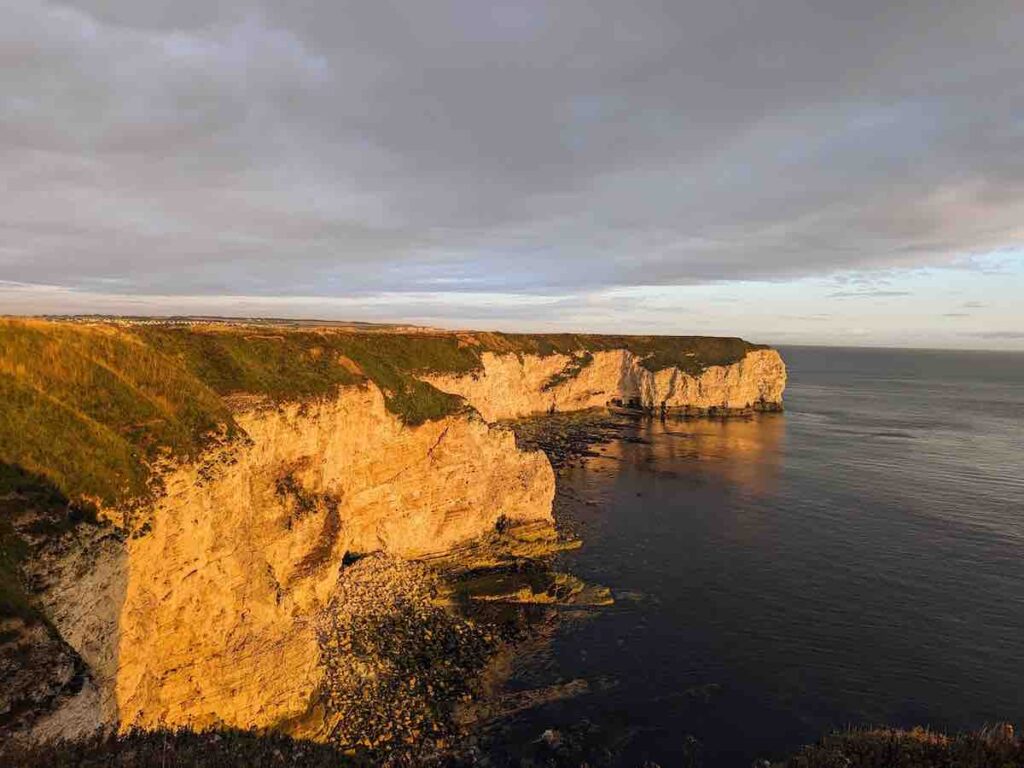
Far from a solitary cliff top, this 12.8km long Flamborough Head & Bempton Cliffs walk is peppered with awe-inspiring sights. Flamborough Head is a Local Nature Reserve (LNR) as well as a Site of Special Scientific Interest (SSSI), protected for its wildlife and geology.
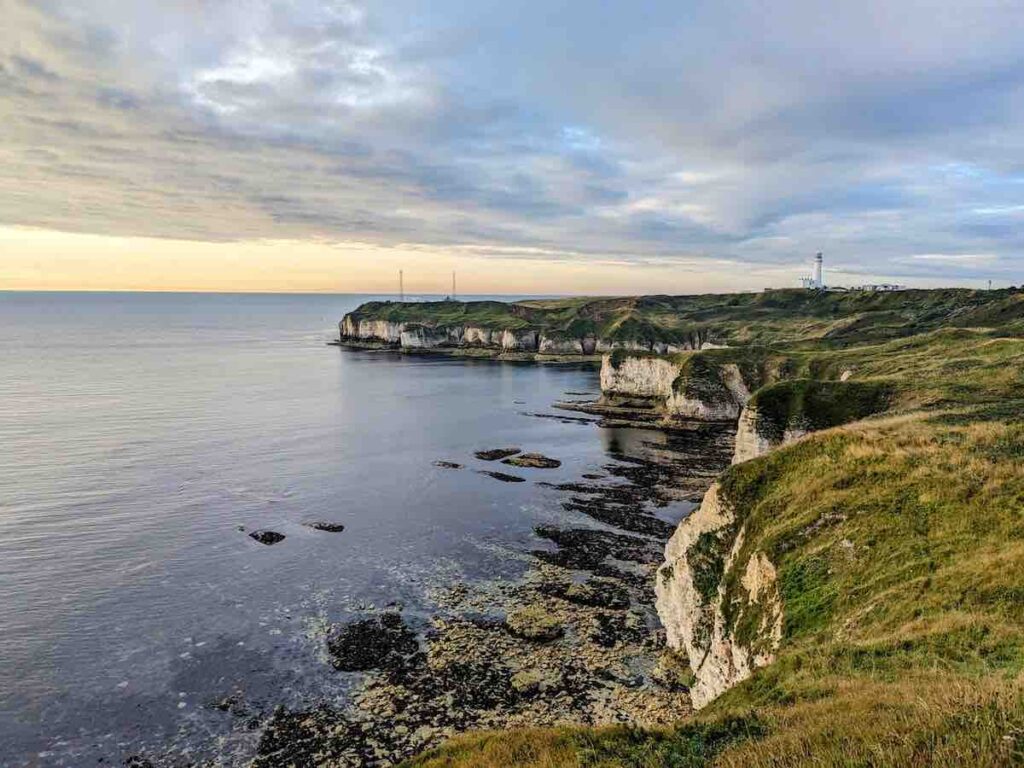
The epitome of slow travel, you’ll marvel in dramatic white cliffs and otherworldly rock stacks. Explore secluded beaches and smuggler caves. Twitch to colonies of nesting birds at Bempton Cliffs RSPB nature reserve. Maybe even spot dolphins, if you’re lucky. Each new bay giving you exponential pleasure.
Having run coast to coast (on my Hadrian’s Wall run), I’m now making my way up and down the East coast, one section at time. Arriving at sunrise (I’m a big believer in the benefits of running in the morning), Flamborough Head is easily one of my favourite UK coastal runs to date – up there with running Holy Island.
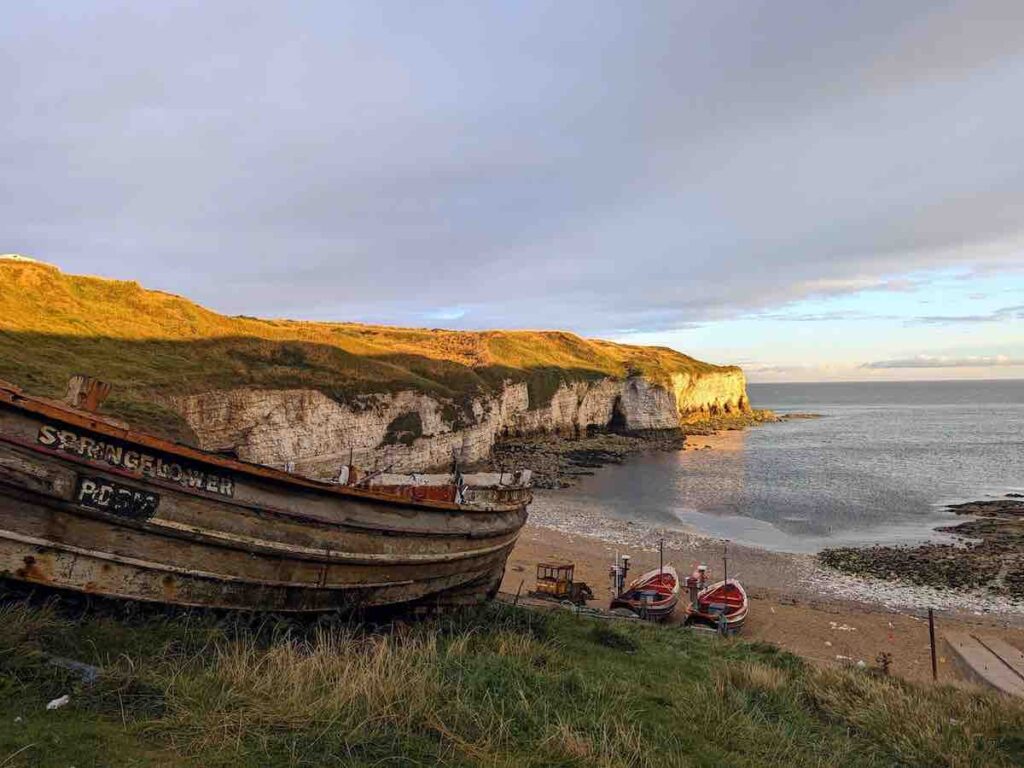
With so many points of interest and photo opportunities it arguably lends itself more to calmer and more considered pace, with a walk or hike. This guide will serve you for either.
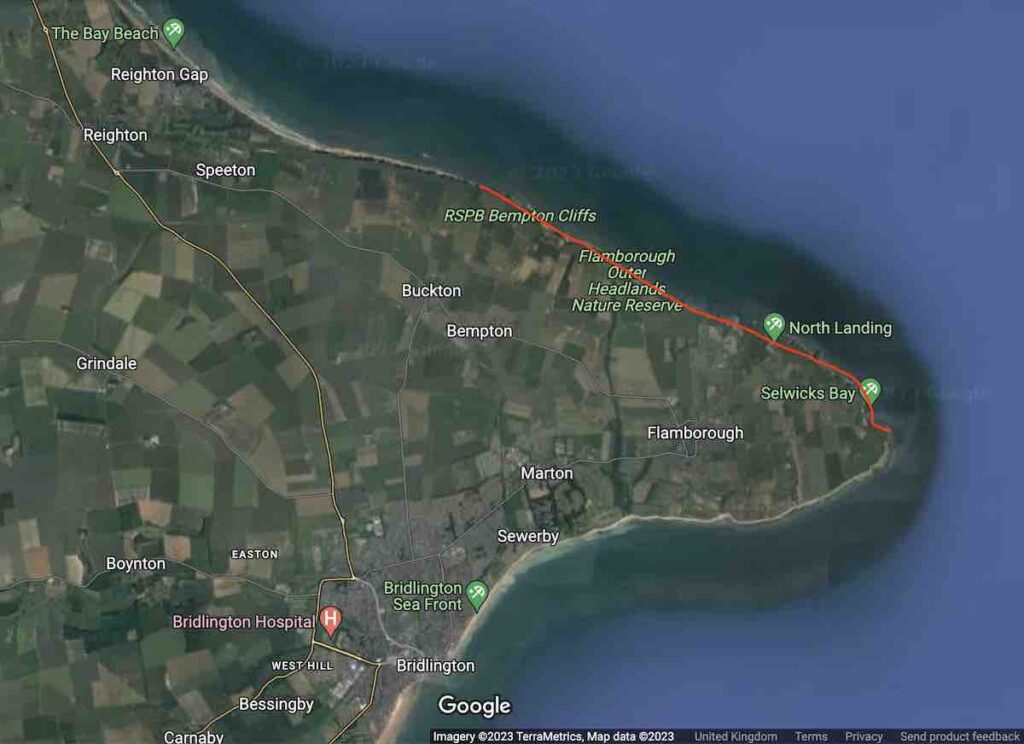
What to expect if walking or running Flamborough cliffs
- Distance: 7km-10km
- Difficulty: Easy-Moderate
- Expect: White Cliffs; Bays; Amazing Views; Sea birds
- Highlights: Lighthouse; Selwicks Bay; Queens Rock; North Landing; RSPB Bempton Cliffs
- Feelings: Calm; Wonder; Joy
Where is Flamborough Head?
Flamborough Head spans 12.8km of coastal path in East Riding of Yorkshire. It is located in between the Filey (19km away) and Bridlington bays (9.5km) of the North Sea.
It took me approximately 1 hour 10 minutes to drive to Flamborough Head from York.
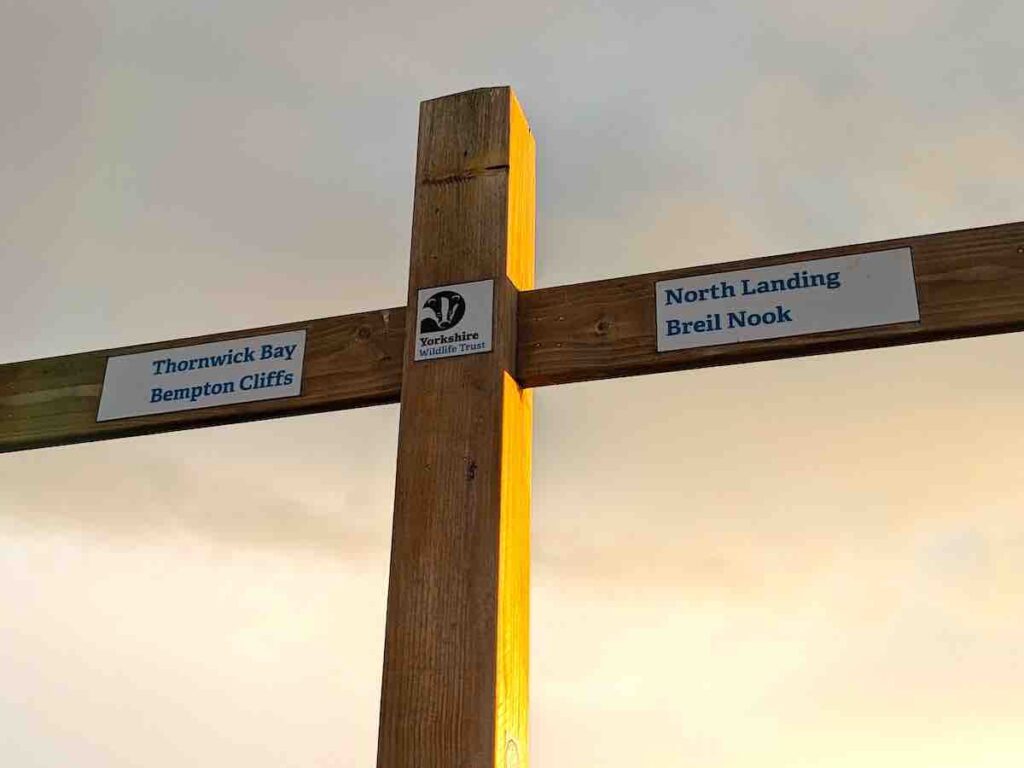
What caused Flamborough Head Headlands & Bays?
Let’s take a quick geology lesson behind Flamborough Head’s towering chalk cliffs. The outer most point of the Yorkshire Wolds – formed from layers of pure marine limestone millions of years ago – where it protrudes 6km into the North Sea.
Flamborough’s cliff tops are remnants of the world before the ice age. Giant boulders (till) carried to North Yorkshire, left behind by the melting glaciers, some 18,000 years ago.
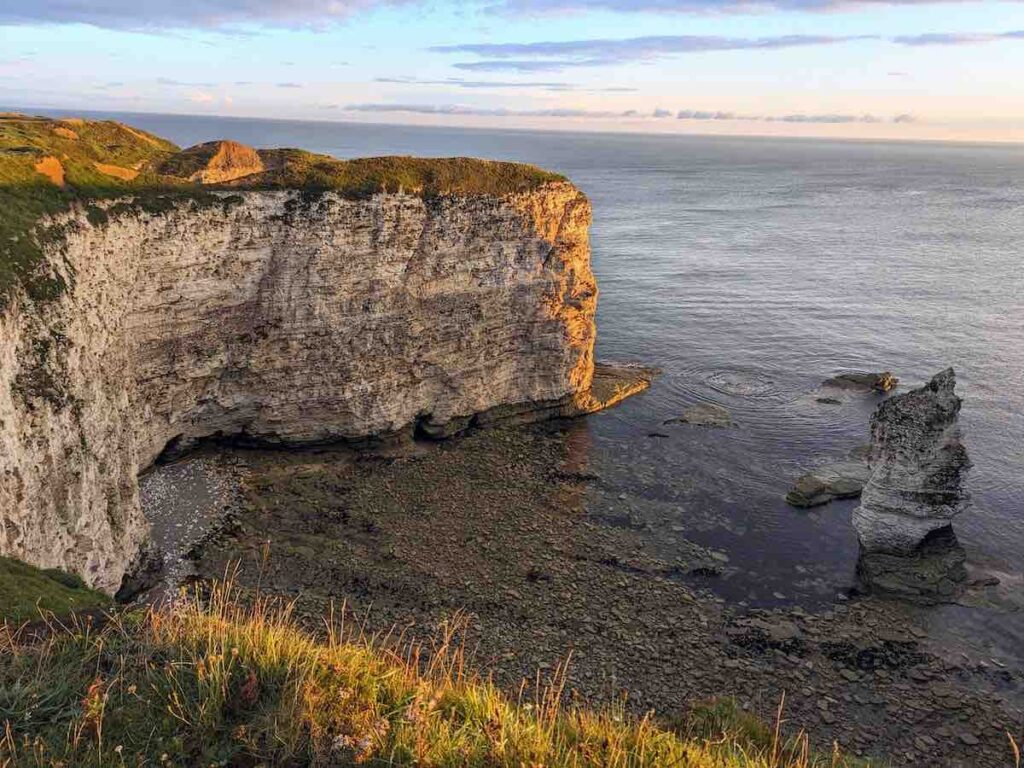
Flamborough Head’s unique shape is given to it by its headlands, bays, caves and stacks. They are created by the sea attacking the land in a few ways:
- Headland are the resilient chalk ledges left standing after softer rock is carved into bays
- Caves and fault lines are born from waves beating against the weakest points in the vertical cliffs
- Where the waves break through, these caves are worn away into rock arches
- If the top of an arch collapses, it leaves an isolated rock standing in the water known as a stack
- The wave-cut platforms you’ll also notice are the result of the cliff collapsing
The beauty of Flamborough Heads headlands owe everything to these connected consequences of erosion along a stretch of coastline formed of different types of rock. The undulating terrain and hard lines of the cliffs making for an unforgettable walk.
Free Car Parking at Flamborough Head
Flamborough Head Lighthouse Car Park
Lighthouse Road
Flamborough
YO15 1AR
Parking is free before 8am and after 6pm.
Car parking charges during the day:
- 1 Hour = £0.70
- 2 Hours= £2.10
- 3 Hours= £3.50
- Max = £4.50
Tips & Route for the Flamborough Head Walk or Run
There’s only one way to experience Flamborough Head in all its glory – to walk or run its full length.
Opt for a simple back-and-forth over the cliff top paths. Please, please, please avoid the circular route that takes you away from the majestic sea cliffs and harbour the blissfully quiet bays and breeding seabirds. You’ll be rewarded with epic views, secluded beaches, wildlife spectacles. In other words, what you came for.
To do so I parked up at the new Flamborough Head lighthouse car park.
💌 Inspiring Run Stories.. in Your Inbox
Start & End Point – Flamborough Head Lighthouse Car Park
Arriving at 5:50am for sunrise, my intention was to get out and back before the car park started charging and time with the family. At that time I (almost) had Flamborough Head to myself. The only other early risers were: a wildlife photographer; a couple sleeping in their car, another having a picnic at sunrise; and a dog walker.
On arrival, I was greeted by both the new Flamborough Head lighthouses and the sun lifting above the horizon. A beautiful orangey glow lighting up my run. A soundtrack of bird song and the calming sea.
It’s no surprise I smiled my whole way round Flamborough Head and Bempton Cliffs. Running isn’t always hard.
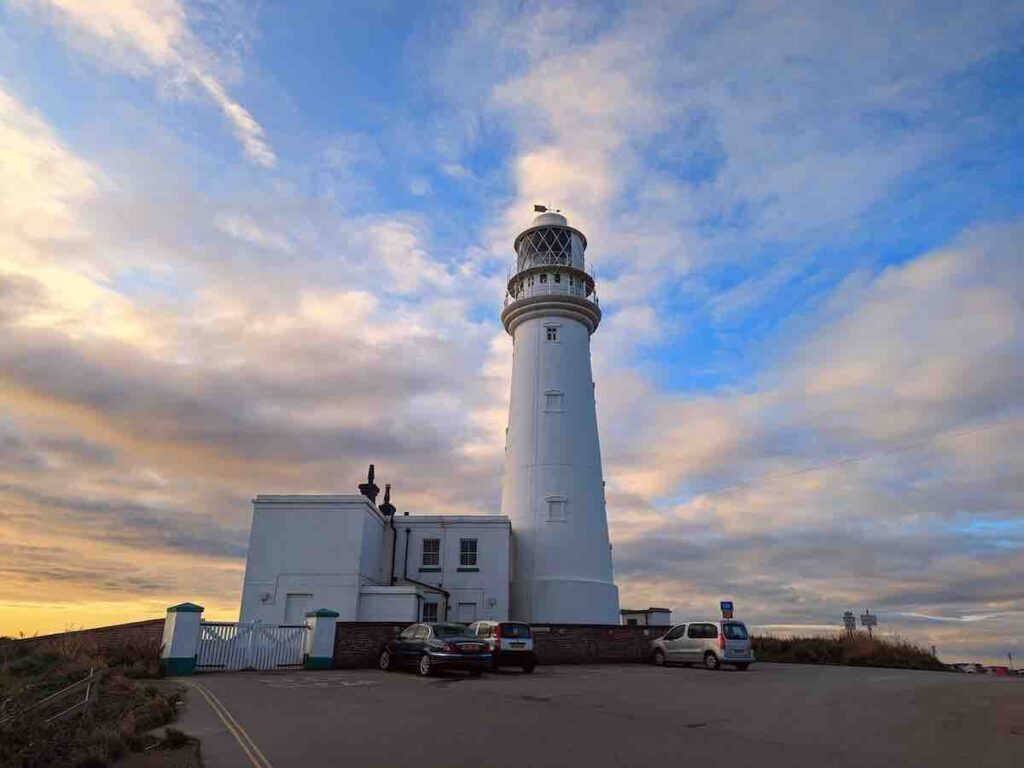
For the best views take the coastal path to the left of the lighthouse, following the curves of the headlands. Stay true the coastal path and it will safely guide you through the entire route.
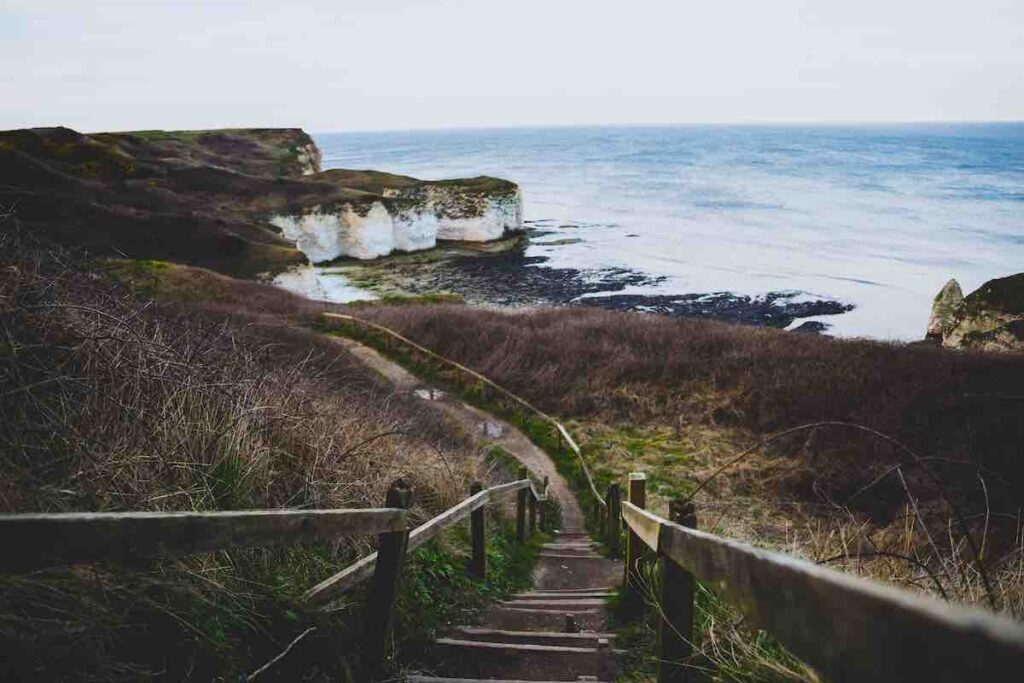
Selwicks Bay
At the foot of the first set of cliffs, where they retreat towards the mainland, is Selwicks Bay. A collection of peaceful stony beaches with rock pools.
Low tide reveals some of Flamborough’s best caves and inlets, where the cliffs have succumbed to the sea.
The trek down and back up is steep, but well worth it.
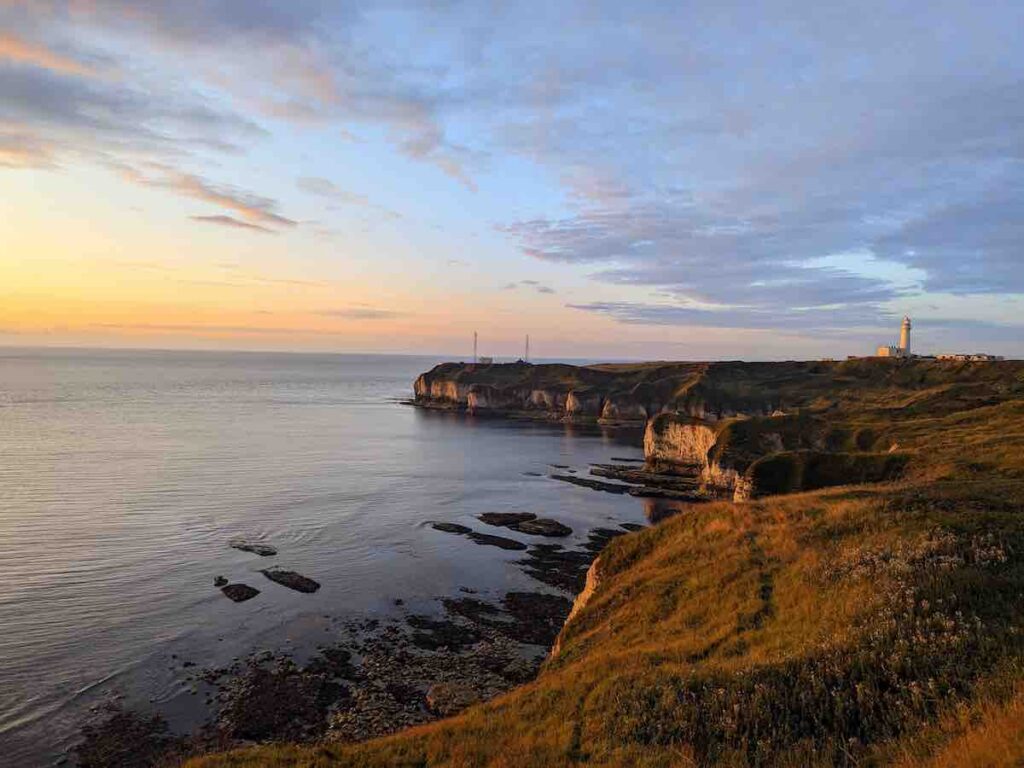
The coastal path continues alongside Flamborough Head golf course. It opens up on the grassy headlands – the outermost sections of the cliffs that just out to sea. It’s here where I encountered roe deer dancing across the 9th hole.
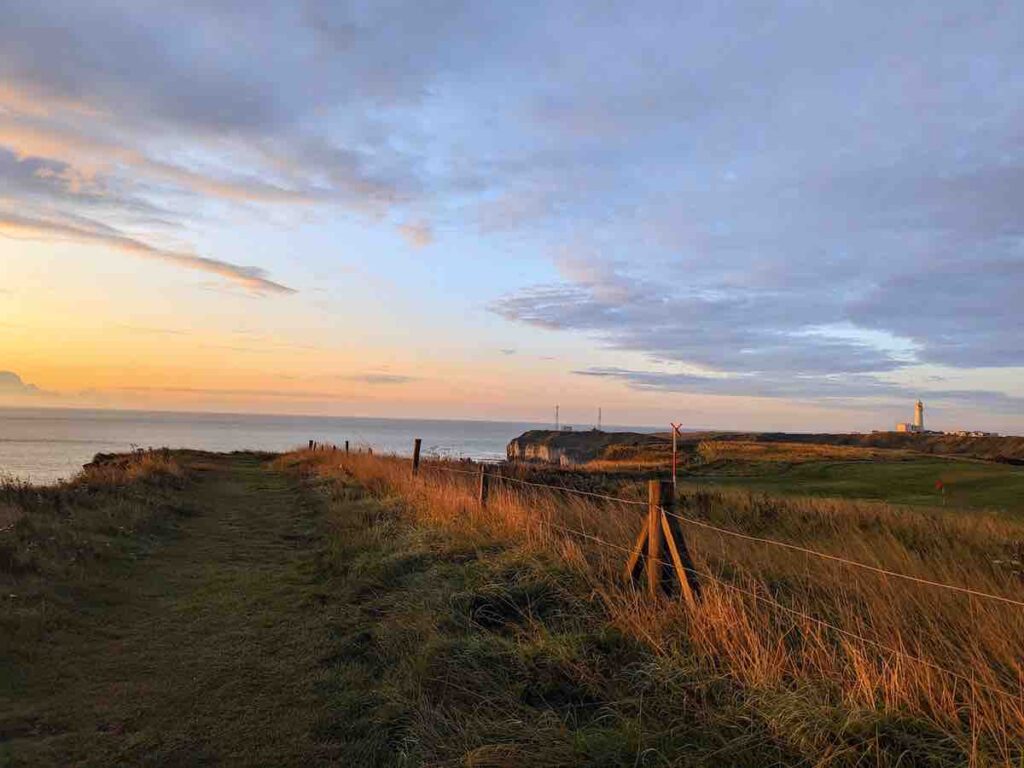
North Landing
Once the beating heart of Flamborough’s fishing industry, North Landing is the most popular of the bays.
Situated in a natural cove, the beach is a delightful mix of soft sand, pebbles and rock pools. Perfect for indulging in traditional seaside pursuits. It also boasts a café.

I got a bit giddy at the sight of the cave, so had to explore. Their wide mouths once welcomed French smugglers, who would haul their cognac and tobacco up to the caves and stash it.
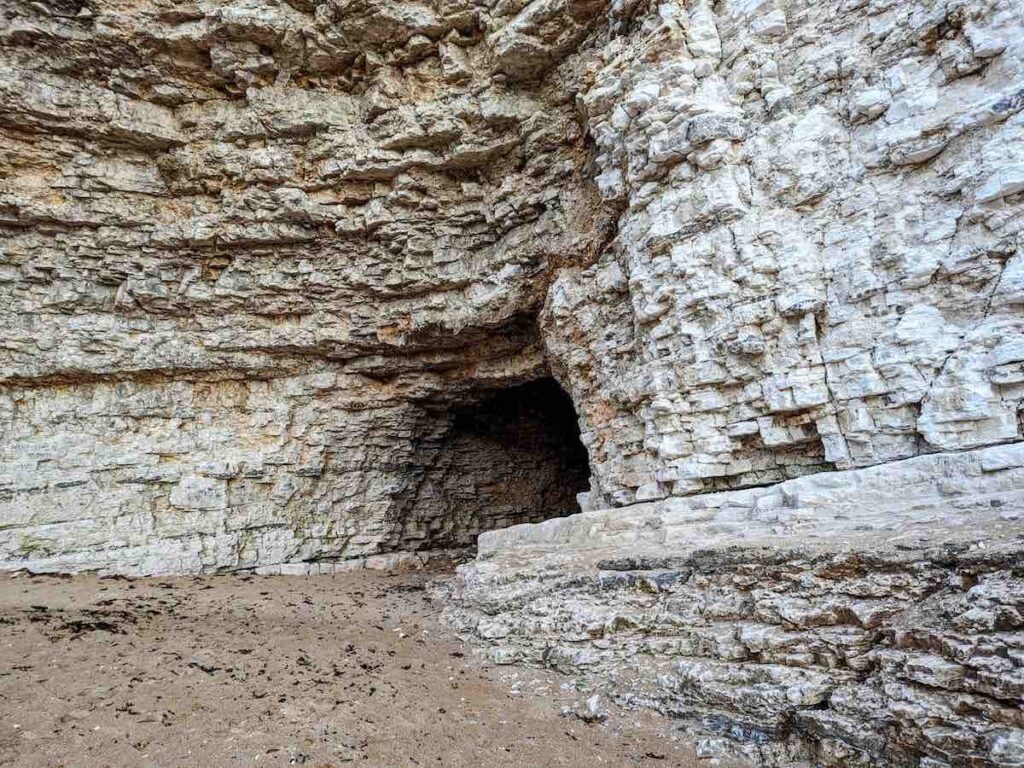
Thornwick Bay
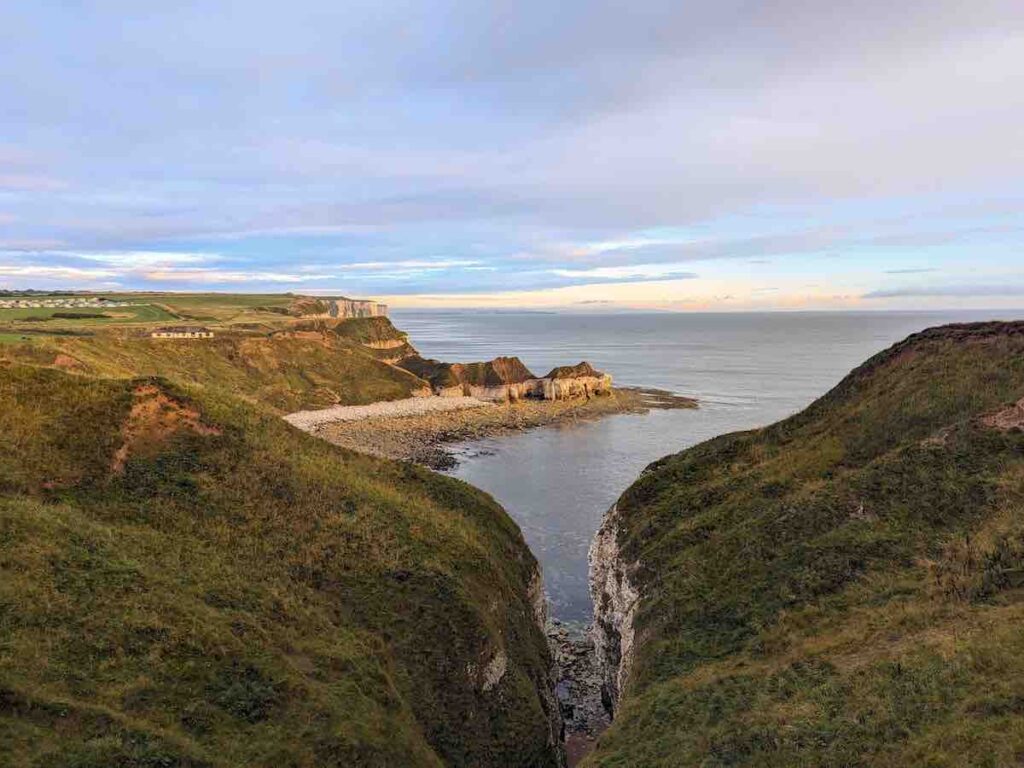
Another turn, another feast of geological wonders. Thornwick Bay is a step up size wise but only shingle beaches. A good spot for exploring yet more caves, fossil hunting or looking out for seals.
In the interests of time, I opted to continue on the cliff top path rather than venture down.
There’s a few more ups and downs to navigate in the next section. Coastal erosion caused by the rolling sea and harsh weather have created a few minor detours. The original paths now looking perilous.
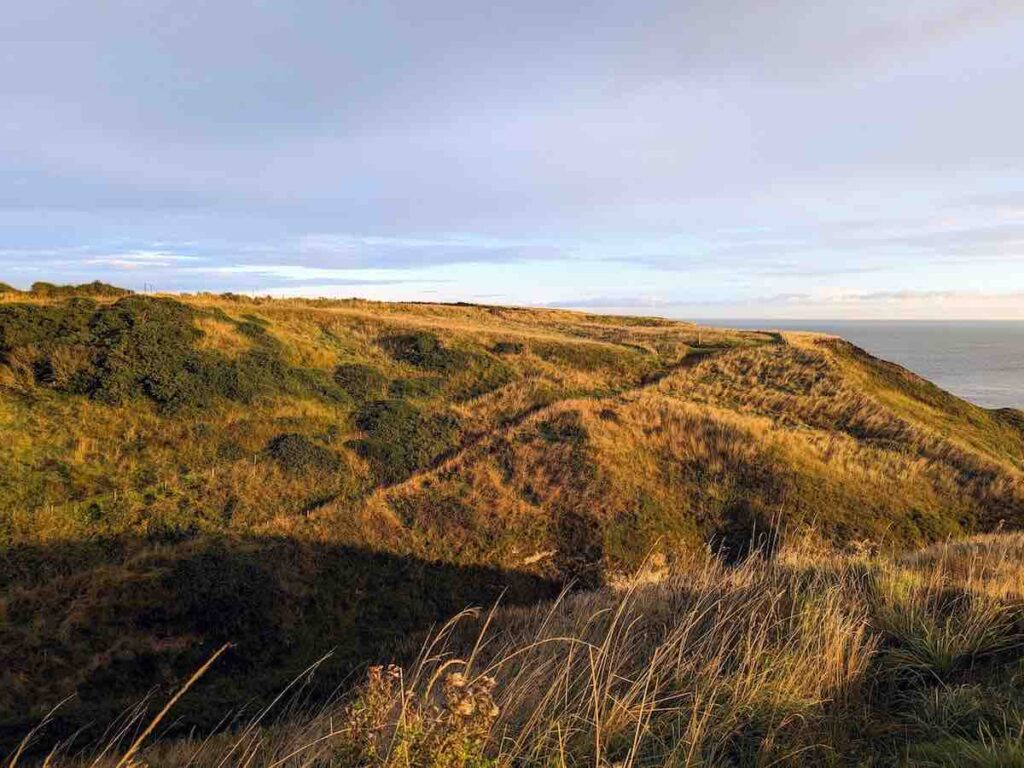
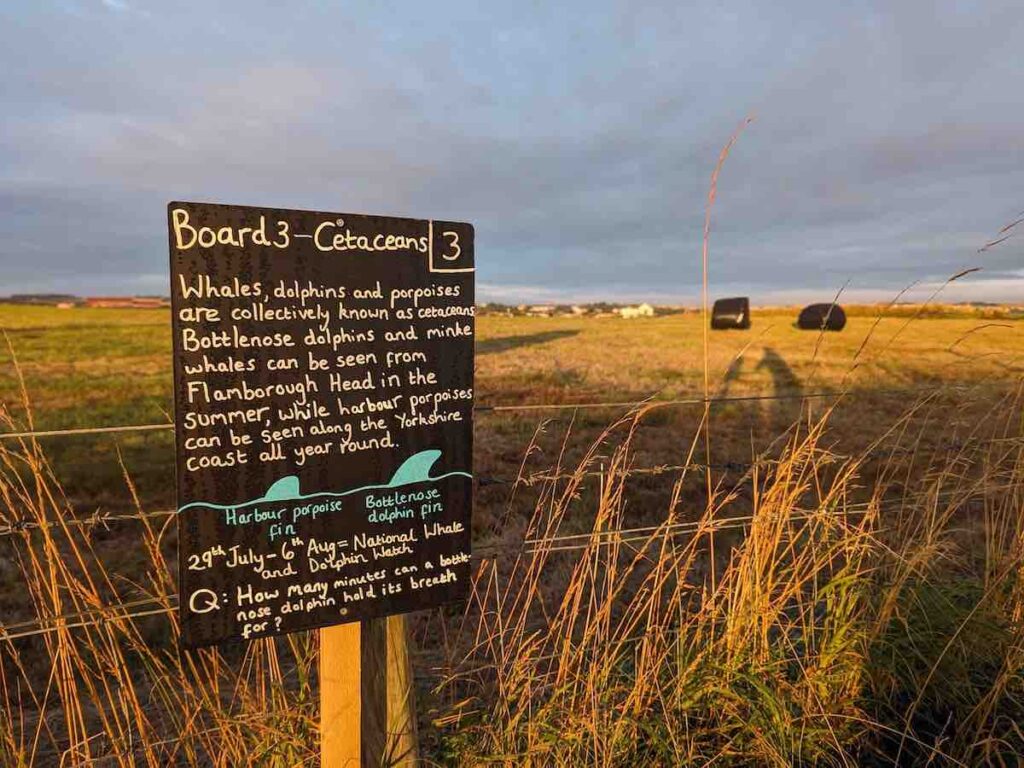
RSPB Bempton Cliffs Nature Reserve
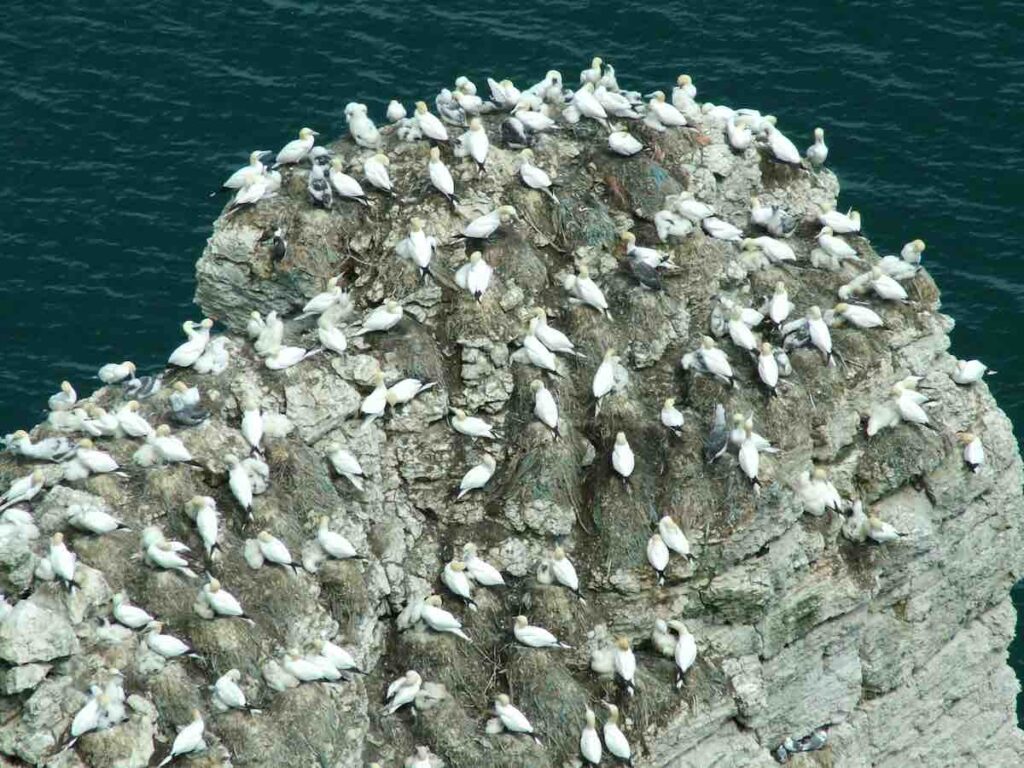
The next point of interest is RSPB Bempton Cliffs. From March to October, the cliffs are a popular breeding ground for up to half a million seabirds.
Every visit is an opportunity for close encounters with puffins, gannets, guillemots, razorbills, aeronauts, kittiwake, and more. Owls too hunt the field margins that line the cliffs.
Keen twitchers line up at four purpose-built viewing platforms at Bempton Cliffs, which extend out over the cliff edge for the best possible close up views.
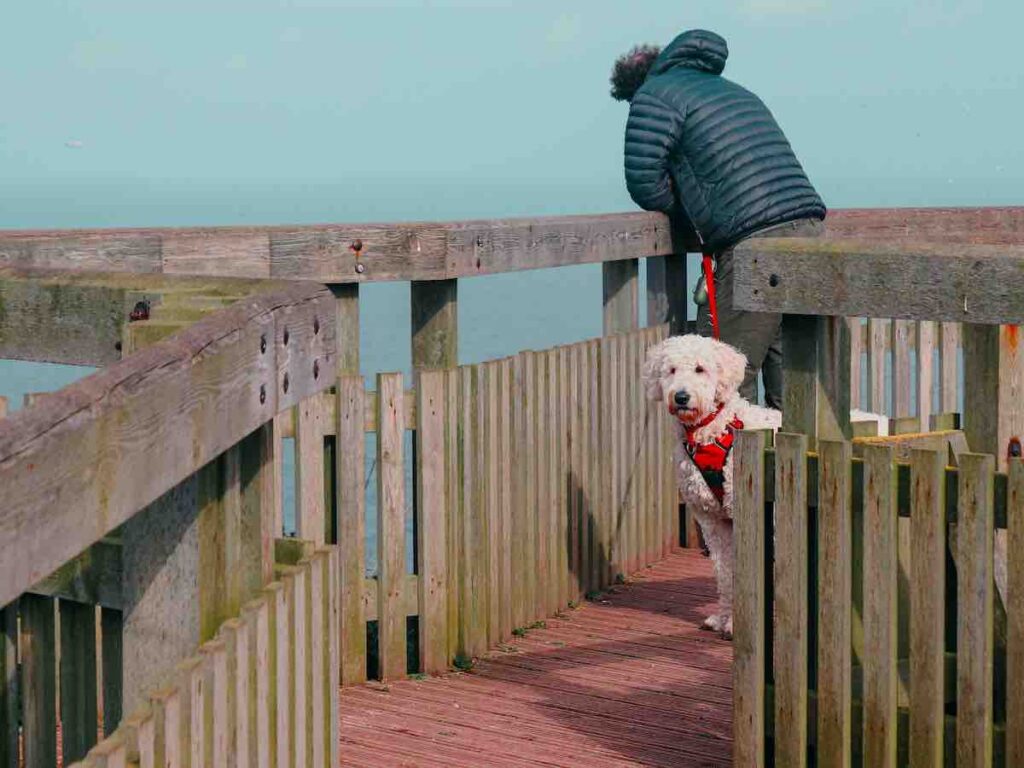
When are the puffins at Bempton Cliffs?
Mid-April to mid-August is the best time to see puffins at Bempton Cliffs.
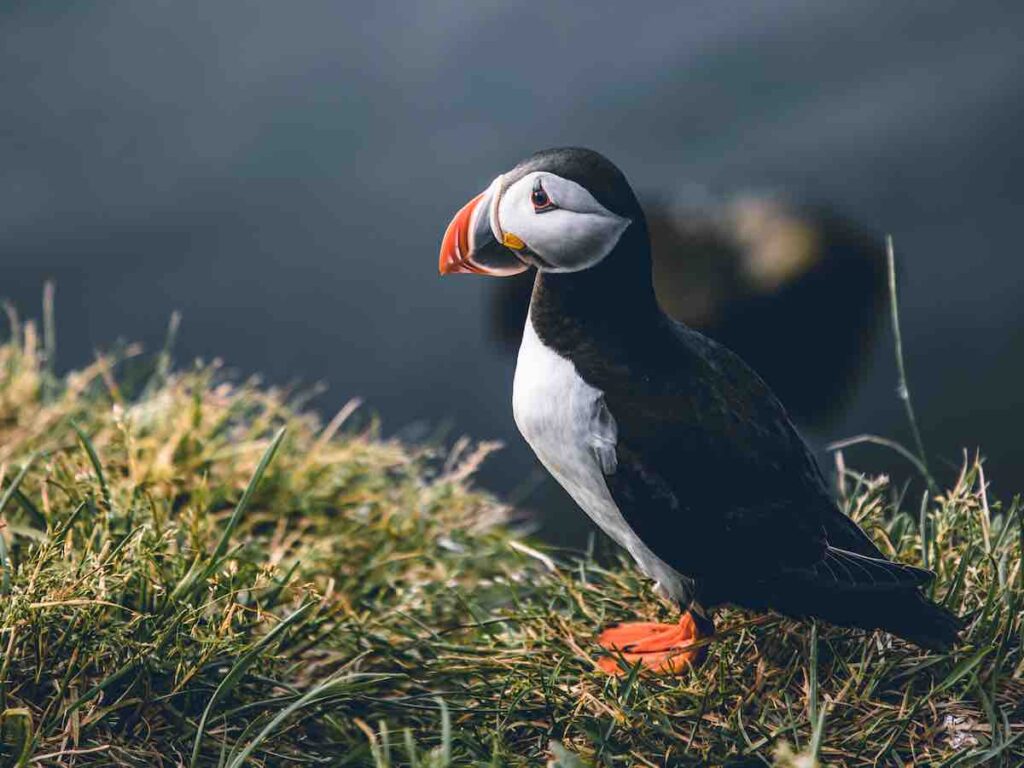
The return leg back to Flamborough Lighthouse

Now in full in tourist mode, I had to drag myself away to return back to where we began my run. Retracing my steps along this breathtaking stretch of the Yorkshire coast, plogging my way along.
My only disappointment being the North Landing cafe not opening until 10am to satisfy my rumbling stomach.

